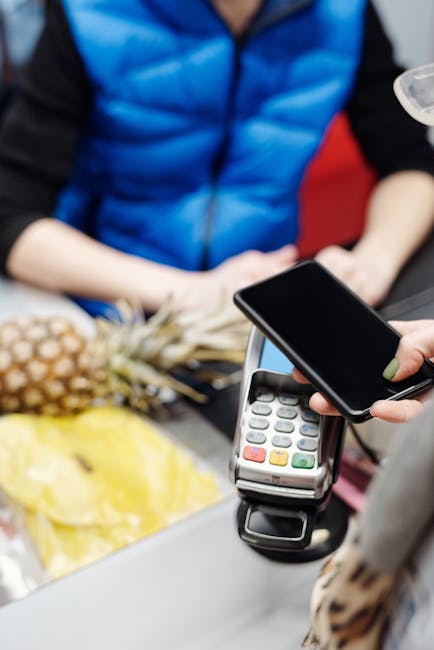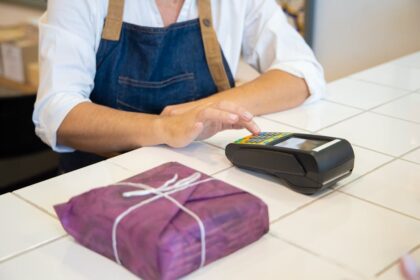The future of Pay Per Click (PPC) advertising stands on the precipice of transformative change, driven by advancements in artificial intelligence, evolving consumer behaviors, stringent privacy regulations, and the emergence of entirely new digital ecosystems. The foundational principles of paid advertising – targeting, bidding, creative, and measurement – are not disappearing, but rather undergoing radical redefinition, shifting from manual optimization to highly automated, intelligent, and personalized campaigns. This evolution demands a fundamental rethinking of strategies, skill sets, and technological infrastructures for marketers and businesses alike, navigating a landscape where precision, relevance, and ethical practices will define success.
The Ascendancy of Artificial Intelligence and Machine Learning
Artificial intelligence (AI) and machine learning (ML) are not merely tools for optimization in the future of PPC; they are becoming the core intelligence driving campaign performance. Their capabilities extend far beyond current automated bidding, encompassing predictive analytics, hyper-personalized creative generation, dynamic budget allocation, and sophisticated fraud detection, ushering in an era of truly autonomous and adaptive advertising.
Automated bidding, already a cornerstone of modern PPC, will evolve dramatically. Current smart bidding strategies, while effective, often operate within predefined rules and limited predictive power. The next generation of AI-driven bidding will leverage vast, real-time datasets – including micro-moment signals, competitor movements, economic indicators, and even weather patterns – to predict conversion probabilities and optimize bids with unprecedented accuracy. This means not just optimizing for conversions, but for the value of those conversions, focusing on customer lifetime value (CLTV) rather than just immediate transactions. AI will dynamically adjust bids multiple times per second, not just per auction, but per user session, factoring in every observable variable to maximize return on ad spend (ROAS) and specific business objectives. Machine learning models will continuously learn from past performance, rapidly adapting to market shifts, algorithm changes, and emerging trends, making manual bid management virtually obsolete for most large-scale operations.
Beyond bidding, AI’s influence will profoundly reshape predictive analytics. Future PPC platforms will utilize advanced ML algorithms to forecast market demand, identify emerging search trends before they peak, and predict consumer behavior patterns with high fidelity. This proactive intelligence will enable advertisers to not only react to shifts but to anticipate them, allowing for pre-emptive campaign adjustments, new keyword discovery, and strategic budget allocation before competitors catch on. Imagine an AI that predicts an increase in demand for sustainable products two months in advance, prompting the creation of new ad groups, landing pages, and creative assets to capture this emerging interest. Such predictive capabilities will transform PPC from a reactive system into a forward-looking, strategic growth engine.
Creative generation and optimization stand as another frontier for AI innovation. Dynamic Creative Optimization (DCO) is already present, but the future takes it to an entirely new level. AI will analyze audience segments, individual user preferences, real-time context, and even emotional responses to generate highly personalized ad copy, headlines, descriptions, and visual assets on the fly. This isn’t just swapping out product images; it involves crafting unique narratives and calls-to-action tailored to a user’s specific journey, previous interactions, and inferred psychographic profile. Large language models (LLMs) and generative AI will create compelling ad copy variations, while generative adversarial networks (GANs) will produce custom image and video assets that resonate deeply with specific audience micro-segments. A user searching for running shoes might see an ad featuring a specific type of terrain they frequently run on, or an ad highlighting a feature that directly addresses a pain point inferred from their search history. A/B testing will be automated and continuous, with AI learning which creative elements drive the highest engagement and conversion rates for specific audience types, ensuring that the most effective ad is always served.
The detection and prevention of ad fraud will also see significant advancements through AI. As ad spending grows, so does the sophistication of fraudulent activities, from bot traffic to click farms. Future AI systems will employ advanced anomaly detection, behavioral biometrics, and pattern recognition to identify and mitigate fraudulent impressions and clicks in real-time. These systems will be able to distinguish legitimate user behavior from bot activity with far greater precision than current methods, protecting ad budgets and ensuring that advertisers are paying for genuine engagement. Machine learning will continuously learn new fraud patterns, making these detection systems highly adaptive and resilient to evolving threats, ultimately leading to a cleaner and more trustworthy advertising ecosystem.
Furthermore, AI will power autonomous campaign management, where entire campaigns, from budget allocation to keyword discovery to creative testing, are orchestrated and optimized by AI with minimal human intervention. While human strategists will still be crucial for setting high-level objectives, providing ethical guidelines, and interpreting macro trends, the day-to-day operational tasks of PPC will be increasingly automated. This shift will free up marketers to focus on higher-value activities: strategic planning, brand storytelling, innovative product development, and understanding the broader market landscape. The AI will act as a hyper-efficient, always-on campaign manager, tirelessly optimizing performance against predefined KPIs.
Hyper-Personalization and Granular Audience Segmentation
The era of broad demographic targeting is rapidly waning. The future of PPC is defined by hyper-personalization, driven by the ability to understand and segment audiences at an incredibly granular level, moving beyond traditional demographics to encompass psychographics, real-time intent, and micro-moments. This shift demands sophisticated data strategies and a focus on delivering genuinely relevant experiences, not just ads.
Future audience segmentation will leverage advanced data analytics to create dynamic, ever-evolving user profiles. These profiles will integrate a multitude of data points: online behavior (search queries, website visits, app usage), offline behavior (purchase history, loyalty program data), declared interests, inferred psychographic traits (personality, values, lifestyles), and real-time contextual signals (location, device, time of day). This holistic view allows advertisers to target not just individuals, but their momentary needs and emotional states. For instance, a user searching for “healthy dinner recipes” might be targeted with ads for meal kits emphasizing convenience if their browsing history indicates a busy lifestyle, or ads for organic ingredients if their previous searches show an interest in sustainable living.
Cross-platform and omnichannel personalization will become the standard. As users seamlessly navigate between devices and platforms – from mobile search to desktop browsing, smart TVs, and social media – their advertising experience must remain coherent and tailored. AI will orchestrate this consistency, ensuring that a user who interacts with an ad on their smartphone sees a complementary, non-redundant message on their desktop later, or a relevant follow-up ad on a CTV platform. This integrated approach not only improves the user experience but also enhances conversion rates by reinforcing the brand message across the entire customer journey, regardless of touchpoint. The goal is to create a unified, personalized narrative that guides the user from awareness to conversion and beyond.
A significant shift will be the focus on Customer Lifetime Value (CLTV) in bidding strategies. Rather than simply optimizing for immediate conversions, future PPC will prioritize acquiring and nurturing customers who are likely to generate higher long-term value for the business. AI-driven bidding algorithms will assess the predicted CLTV of potential customers based on their profile and behavior, adjusting bids to secure high-value leads even if the initial cost-per-acquisition (CPA) is higher. This strategic shift moves PPC from a transactional mindset to a relationship-focused one, ensuring sustainable growth and more profitable customer acquisition. For a subscription service, this means bidding more aggressively for users who have shown a history of long-term subscriptions with similar services, even if the initial sign-up cost is higher.
The increasing emphasis on privacy and the deprecation of third-party cookies necessitate a robust first-party data strategy. Businesses will invest heavily in collecting, organizing, and activating their own customer data – through CRM systems, loyalty programs, website analytics, and direct interactions. This first-party data, combined with privacy-preserving technologies like data clean rooms, will become the backbone of hyper-personalization. Data clean rooms allow multiple parties (e.g., advertisers and publishers) to securely match and analyze anonymized customer data without directly sharing personally identifiable information (PII). This collaborative environment will enable richer audience segmentation and more accurate targeting while respecting user privacy, fostering a new era of data-driven partnerships. The ability to effectively leverage first-party data will become a significant competitive differentiator in the future PPC landscape.
Privacy and Data Regulation Impact
The landscape of digital advertising is being profoundly reshaped by increasing privacy concerns and stringent data regulations worldwide. The cookieless future, driven by browser restrictions and regulatory mandates, forces PPC advertisers to fundamentally rethink their tracking, targeting, and measurement strategies. Navigating this evolving environment requires a proactive embrace of privacy-enhancing technologies (PETs) and a renewed focus on transparency and user trust.
The deprecation of third-party cookies by major browsers like Chrome signals a monumental shift. Advertisers can no longer rely on these persistent identifiers for cross-site tracking, remarketing, and audience segmentation. This transition is pushing the industry towards alternative identification and targeting mechanisms. Google’s Privacy Sandbox initiatives, including the Topics API (which replaces FLoC), aim to provide privacy-preserving ways to enable interest-based advertising without individual user tracking. These new APIs allow advertisers to target groups of users based on their broad interests, inferred from their browsing history, while keeping individual browsing data private. Advertisers will need to deeply understand and integrate with these new APIs, adapting their targeting strategies to work within these privacy-centric frameworks.
Beyond Google’s solutions, contextual advertising is experiencing a resurgence. Without reliance on individual user data, advertisers can place ads based on the content of the web page or video being viewed. AI-powered contextual engines are far more sophisticated than their predecessors, capable of analyzing not just keywords, but the sentiment, tone, and full semantic meaning of content to ensure highly relevant ad placement. For example, an ad for hiking boots might appear next to an article about national park trails, even if the user has never searched for hiking boots before. This method respects user privacy by not tracking individuals, focusing solely on the immediate consumption context.
Privacy-Enhancing Technologies (PETs) will become mainstream tools for advertisers. Beyond data clean rooms, technologies like federated learning and differential privacy will gain prominence. Federated learning allows machine learning models to be trained on decentralized datasets (e.g., user data on individual devices) without the raw data ever leaving the device, preserving privacy while still contributing to aggregate insights. Differential privacy adds statistical noise to data sets, making it impossible to identify individuals while still allowing for aggregate analysis. These technologies will enable advertisers to derive insights and optimize campaigns using sensitive data while maintaining compliance with privacy regulations and building user trust.
Trust and transparency will emerge as critical competitive advantages. In a world where consumers are increasingly aware and concerned about their data privacy, brands that demonstrate a genuine commitment to ethical data practices will stand out. This means providing clear and easily understandable privacy policies, offering granular control over data sharing, and ensuring that advertising practices align with consumer expectations. Advertisers will need to be explicit about how user data is collected, used, and protected, fostering an environment of trust that encourages users to opt-in to personalized experiences. Brands that prioritize user privacy will likely see higher engagement rates and greater brand loyalty in the long run.
Compliance challenges will continue to escalate with evolving regulations like GDPR, CCPA, and new state-specific privacy laws. PPC professionals will need to stay abreast of these legal frameworks and ensure that their campaigns, data collection, and targeting practices are fully compliant. This may involve implementing consent management platforms (CMPs) that are more sophisticated and user-friendly, allowing users to make informed choices about their data. Non-compliance carries significant financial and reputational risks, making legal and ethical considerations central to future PPC strategy. The focus will shift from “what can we track” to “what should we track,” with a strong emphasis on user value and consent.
New Ad Formats and Channels
The future of PPC extends far beyond traditional search and display ads on desktop and mobile. A proliferation of new digital environments and device categories is giving rise to innovative ad formats and channels, demanding a diversified and integrated media strategy. These emerging touchpoints offer unique opportunities for engagement, requiring advertisers to adapt their creative and targeting approaches.
Voice search and audio ads represent a significant, yet still nascent, frontier. With the proliferation of smart speakers (Amazon Echo, Google Home), voice assistants on smartphones, and wearable devices, voice interactions are becoming commonplace. PPC for voice will differ fundamentally from text-based search. It will be less about keyword matching and more about natural language understanding, intent recognition, and conversational commerce. Advertisers will need to optimize for long-tail, conversational queries and provide concise, relevant audio responses. Audio ads, integrated into podcasts, streaming music services, and even smart speaker responses, will offer a non-visual, highly immersive advertising experience. These ads will need to be contextually relevant and seamlessly integrated, perhaps offering voice-activated calls-to-action (“Alexa, add this to my cart”) or interactive experiences.
Connected TV (CTV) and streaming ads are already booming and poised for massive growth. As more consumers cut the cord and shift to streaming services (Netflix, Hulu, Disney+, YouTube TV), traditional TV advertising budgets are migrating to CTV. Programmatic CTV allows for granular audience targeting (based on viewing habits, demographics, and cross-device data) that linear TV cannot offer. Future CTV ads will be highly interactive and shoppable, allowing viewers to purchase products directly from their TV screen using a remote or QR code, or even initiate a voice command. The challenge will be in measuring effectiveness and attribution across a fragmented CTV landscape, requiring sophisticated measurement solutions that link TV impressions to online conversions.
Augmented Reality (AR) and Virtual Reality (VR) ads, particularly within the nascent metaverse, represent the bleeding edge of PPC. AR ads could allow users to “try on” clothes virtually before purchasing, preview furniture in their home, or interact with 3D product models. VR advertising will create immersive brand experiences within virtual worlds, offering unprecedented levels of engagement. Imagine a virtual storefront within a metaverse game where users can browse products, interact with AI-powered brand ambassadors, and make purchases. While still in early stages, marketers need to experiment with these formats, understanding that the value proposition here is experiential and interactive, not just informational. The metrics for success will evolve, focusing on engagement time, interaction rates, and virtual conversions.
In-game advertising, already prevalent, will become more sophisticated. Beyond banner ads and branded content, future in-game ads will be dynamic, personalized, and seamlessly integrated into gameplay. This could include interactive billboards in virtual cities, product placement that adjusts based on player behavior, or even mini-games sponsored by brands. The key is to provide value to the player and enhance the gaming experience rather than disrupt it, ensuring that ads are contextually relevant and non-intrusive.
Digital Out-of-Home (DOOH) advertising, increasingly programmatic, bridges the digital and physical worlds. Large digital screens in public spaces (billboards, bus stops, shopping malls) can now serve ads dynamically based on real-time data like foot traffic, demographics of passersby, time of day, and even local events or weather. Future DOOH will integrate with mobile devices, allowing for seamless transitions from a public screen ad to a mobile landing page or a direct purchase opportunity. Imagine an ad for umbrellas appearing on a DOOH screen during a sudden rain shower, offering a mobile coupon or directions to the nearest store.
Shoppable ads and live commerce integration will blur the lines between advertising and direct sales. Across social media platforms, streaming services, and even search results, ads will increasingly allow for immediate purchase without leaving the platform. Live commerce, where brands stream interactive shopping events, will integrate PPC to drive viewership and engagement. This trend emphasizes the need for streamlined conversion paths, robust e-commerce integrations, and high-quality, conversion-focused creative assets. The line between advertising and retail will continue to dissolve, making PPC a direct revenue driver in more immediate ways.
Attribution and Measurement Evolution
The traditional last-click attribution model is fundamentally flawed in a multi-touch, omnichannel customer journey. The future of PPC demands sophisticated attribution models, incrementality testing, and unified measurement platforms that provide a holistic, accurate view of marketing effectiveness, all while navigating the complexities of privacy-preserving data.
Multi-touch attribution (MTA) models, particularly data-driven attribution (DDA), will become the standard. DDA uses machine learning to assign credit to each touchpoint in the customer journey based on its actual contribution to conversions, moving beyond simplistic rules-based models like linear or time decay. These models analyze vast datasets of user interactions, understanding complex pathways and identifying which touchpoints truly influence a conversion. For example, a display ad that introduces a user to a brand might receive partial credit even if the final conversion comes from a branded search click, something last-click attribution would ignore. Implementing DDA requires robust data collection, advanced analytics capabilities, and integration across various marketing channels, ensuring a more accurate understanding of PPC’s true impact.
Marketing Mix Modeling (MMM) and incrementality testing will complement MTA by providing a macro-level understanding of marketing effectiveness. MMM analyzes historical data across all marketing channels (digital, traditional, offline) along with external factors (seasonality, economic trends, competitor activity) to determine the optimal allocation of marketing spend. It helps answer big-picture questions like “How much should we spend on digital vs. TV?” and “What is the overall ROI of our marketing budget?” Incrementality testing, on the other hand, isolates the causal effect of specific advertising campaigns. By running controlled experiments (e.g., exposing one group to ads and another to no ads), advertisers can precisely measure the uplift in conversions directly attributable to their PPC efforts, providing concrete proof of ROI that even sophisticated attribution models cannot fully capture without experimentation.
The need for unified measurement platforms will become paramount. As ad spend fragments across numerous channels – search, social, CTV, audio, AR/VR, DOOH – marketers face the challenge of siloed data and fragmented insights. Future measurement solutions will integrate data from all these diverse touchpoints into a single, comprehensive dashboard. These platforms will leverage AI to normalize data, identify cross-channel synergies, and provide actionable insights into the true performance of the entire marketing mix. This unification will enable marketers to make smarter, data-driven decisions about budget allocation across their entire media portfolio, optimizing for holistic business outcomes rather than isolated channel performance.
Privacy-preserving measurement solutions are a critical evolution. With the demise of third-party cookies and increasing data restrictions, traditional user-level tracking is becoming obsolete. New measurement approaches will rely on aggregated, anonymized data, statistical modeling, and privacy-enhancing technologies. This includes methods like differential privacy (adding noise to data to protect individual identities), secure multi-party computation (allowing data sets to be analyzed collaboratively without revealing underlying data), and synthetic data generation (creating artificial datasets that mimic real-world data but contain no PII). Marketers will need to adapt to these new methodologies, understanding that while individual-level tracking may diminish, robust and accurate aggregate insights will still be achievable, albeit through more complex and privacy-conscious techniques. This shift emphasizes statistical rigor and a deeper understanding of data science principles among PPC professionals.
Economic and Societal Shifts
The future of PPC is not immune to broader economic and societal shifts. Factors such as a growing emphasis on sustainability, economic volatility, the rise of the gig and creator economies, and persistent concerns around brand safety and suitability will significantly influence ad spending, targeting strategies, and the very nature of ad content.
Sustainability and ethical advertising are rapidly moving from niche considerations to mainstream imperatives. Consumers, particularly younger generations, are increasingly prioritizing brands that demonstrate environmental responsibility and ethical practices. This will translate into demand for more sustainable advertising practices, such as reduced carbon footprint from ad tech (e.g., energy consumption of data centers), transparent supply chains, and ad content that promotes environmentally friendly products and values. Advertisers will need to ensure their PPC campaigns align with these values, potentially highlighting sustainable product features in ad copy, partnering with eco-conscious publishers, and avoiding controversial or exploitative content. Brands with strong ESG (Environmental, Social, and Governance) credentials may see higher engagement and conversion rates, as consumers increasingly vote with their wallets.
Economic volatility, characterized by inflation, recessions, and supply chain disruptions, will compel businesses to demand even greater accountability and ROI from their PPC investments. In times of economic uncertainty, marketing budgets are often scrutinized, making efficient spending paramount. PPC, with its measurable nature, will remain a critical channel, but the focus will intensify on profitability and provable return on ad spend. Advertisers will need to leverage AI and advanced analytics to optimize campaigns for maximum efficiency, demonstrating clear pathways from ad spend to revenue. This means a greater emphasis on CLTV, precise forecasting, and flexible budget allocation that can quickly adapt to changing economic conditions.
The rapid growth of the gig economy and the creator economy presents both opportunities and challenges for PPC. The gig economy means more independent contractors and small businesses entering the market, potentially increasing the demand for self-serve PPC platforms and specialized tools tailored to their needs. The creator economy, where individual content creators wield significant influence, opens up new avenues for influencer marketing integrated with paid media. Brands might leverage creator-generated content within their PPC ads, or directly sponsor creators to drive traffic to their paid campaigns. This requires new models of collaboration and attribution, understanding how an influencer’s organic reach can amplify paid efforts. PPC for creators themselves will also grow, as they seek to monetize their content and expand their audience.
Brand safety and brand suitability will continue to be critical concerns in an ever-expanding and often fragmented digital content landscape. As content proliferation continues across platforms like TikTok, YouTube, and emerging metaverse environments, advertisers face the challenge of ensuring their ads appear alongside appropriate and brand-aligned content. Future PPC platforms will incorporate more sophisticated AI-driven content analysis tools that go beyond keywords to understand context, sentiment, and user-generated content nuances. This will help advertisers avoid adjacency to misinformation, hate speech, or inappropriate content, protecting brand reputation. Suitability goes a step further, ensuring ads appear in environments that are not just safe, but also align with a brand’s specific values and target audience. For instance, a luxury brand might want to avoid even generally safe but low-quality content. This demands proactive monitoring, granular control over ad placements, and a strong understanding of content moderation capabilities across different ad networks.
Skillset Evolution for PPC Professionals
The future of PPC demands a significant evolution in the skillset of marketing professionals. As AI automates tactical tasks, the human role shifts from manual optimization to higher-level strategic thinking, data interpretation, ethical oversight, and cross-functional collaboration. The PPC manager of tomorrow will be less of an operator and more of a strategic orchestrator.
PPC professionals will transition from tactical operators to strategic data scientists and AI whisperers. The ability to manually adjust bids or write ad copy will diminish in importance. Instead, marketers will need to understand how AI algorithms work, how to feed them the right data, how to interpret their outputs, and how to course-correct when anomalies occur. This requires a strong foundation in data analytics, statistical reasoning, and an intuitive understanding of machine learning principles. They will be responsible for defining campaign objectives, setting strategic parameters for AI systems, and asking the right questions of the data to uncover deeper insights. Essentially, they will become the architects of AI-driven campaigns, guiding the machines rather than performing the manual labor themselves.
A crucial emerging role will be that of the creative strategist who understands AI’s capabilities. With generative AI creating vast quantities of ad copy and visual assets, the human role shifts to setting the creative vision, ensuring brand consistency, and providing the nuanced emotional intelligence that AI currently lacks. These strategists will define the brand voice, identify compelling narratives, and guide AI in generating effective creative variations. They will work closely with AI to test and refine ad content, blending human creativity with machine efficiency to produce highly engaging and personalized ad experiences. This also involves understanding which creative elements resonate with specific psychographic profiles and cultural nuances that AI may struggle to fully grasp.
Cross-functional collaboration will become indispensable. The future of PPC cannot operate in a silo. Success will depend on seamless integration with other marketing disciplines (SEO, content marketing, social media, PR), sales teams, product development, and data science departments. PPC professionals will need strong communication and collaboration skills to ensure that paid campaigns align with broader business objectives, leverage first-party data effectively, and contribute meaningfully to the entire customer journey. They will be the bridge between technical campaign execution and overarching business strategy, translating data insights into actionable business recommendations.
Adaptability and continuous learning will be non-negotiable attributes. The pace of technological change in PPC is accelerating. New platforms, ad formats, privacy regulations, and AI capabilities will emerge constantly. Professionals who thrive in this environment will be those who embrace change, are curious, and commit to lifelong learning. This involves staying updated on industry trends, experimenting with new technologies, and proactively acquiring new skills in areas like data privacy, AI ethics, and advanced analytics. The ability to quickly pivot strategies, test new approaches, and learn from both successes and failures will define the most effective PPC professionals. Those who resist change or fail to adapt their skill sets risk becoming obsolete in a rapidly evolving landscape. The future demands a proactive mindset, where continuous education is as important as daily campaign management.











